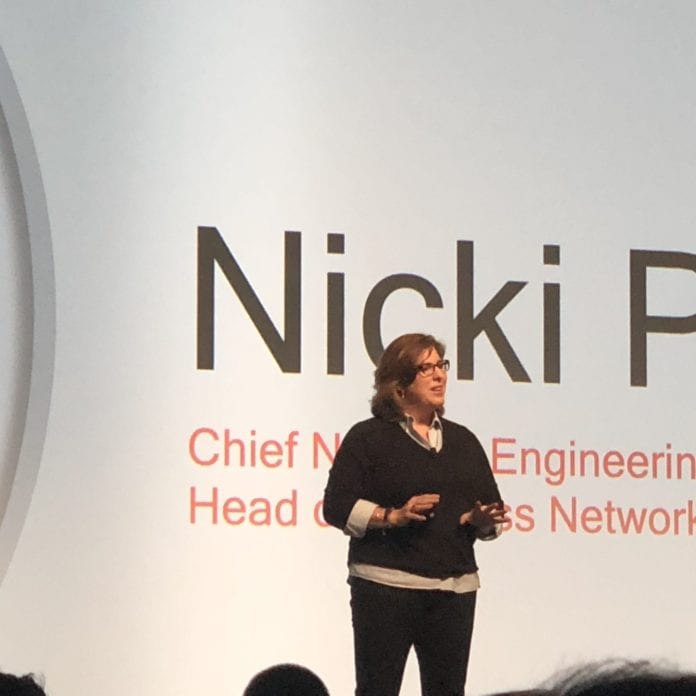Nicki Palmer stresses first mover advantage Verizon has on 5G
Wailea, HAWAII–Verizon in October launched its 5G Home service, a fixed wireless residential broadband offering that uses the carrier’s millimeter wave spectrum. And, in 2019, expect the launch of a standards-based mobile service using those same high-frequency holdings. Despite years of skepticism around the viability of a commercial millimeter wave service, the technology is now proven, according to Nicki Palmer, Verizon’s chief network engineering officer.
Speaking at Qualcomm’s Snapdragon Tech Summit in Maui, Palmer said, “I have nothing else to say to the skeptics. You can catch up when you’re ready. By pushing this technology out as early as possible, there is a first mover advantage.” And that advantage is more than just a better understanding of the complexities of millimeter wave propagation, but also related to operational aspects of the network. “These are things that need to be optimized over time,” Palmer said.
For its mobile service, Verizon is working with Motorola and Samsung to offer devices that support millimeter wave frequencies. The moto z3 is compatible with a clip on mod that contains millimeter wave modules built by Qualcomm that let it access the high-band frequencies. The Samsung smartphone, a prototype which was on display at the Qualcomm event and working over a live 5G network, will be powered by Qualcomm’s Snapdragon 855 mobile platform, X50 modem and millimeter wave antenna modules.
Beyond spectral characteristics and network operations, Palmer also highlighted key learnings related to customer experience, which informs how more refined future 5G services will be marketed and offered to the end user.
In terms of marketing 5G services, Palmer said there’s risk the offering could be muddied by technical information. Customers, she said, “will pay for a differentiated service. They will pay for something that makes their job and their life easier.”

